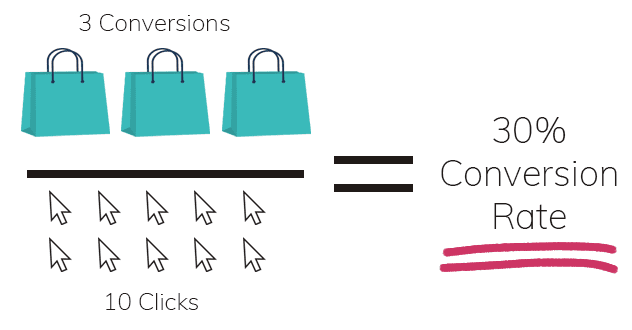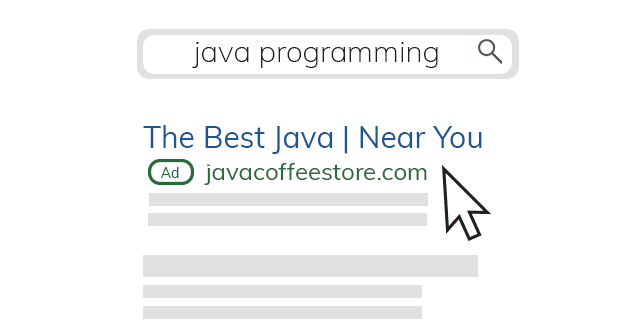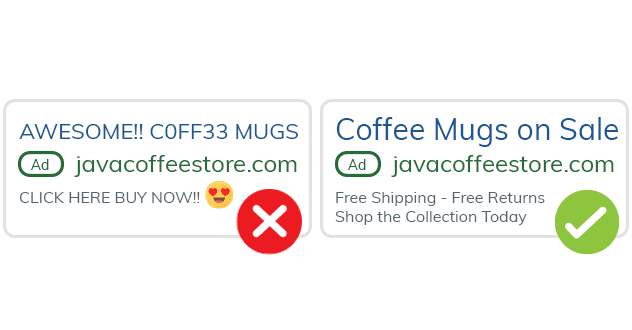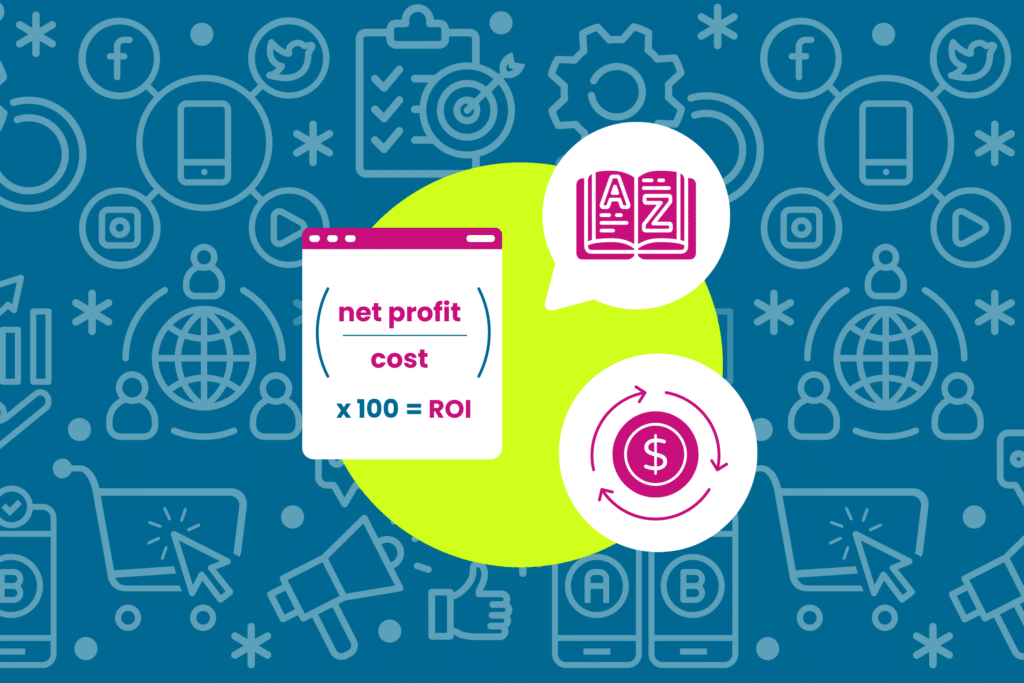Many agencies focus on conversion rate—for good reason. Your conversion rate can show how effective your ads and landing pages are at driving conversions. It can also help you make important decisions to increase sales. Let’s take a look at what factors can influence your conversion rate to ensure that you are consistently and effectively converting clients.
Check out our quick video for 3 ways to improve your conversion rate today:


Calculating conversion is rate is easy! Simply divide your conversions by your number of clicks.
How is Conversion Rate Calculated?
How do you calculate conversion rate? Conversion rate is calculated by dividing the total number of conversions by the number of users who clicked on your ad. A conversion can be a number of different actions. A purchase, a form submission, a content subscription, a phone call, and or anything else that measures success for your advertising campaign can all be considered conversions, depending on your business goals. Google Ads offers a number of different conversion tracking options, and retail companies have the option to use E-commerce data in Google Analytics to measure and track sales as well.

Improving Your Conversion Rate
Optimizing your conversion rate begins the moment you create your Google Ads account. It is important to start thinking about conversion rate from the beginning because many of the elements that contribute to a good conversion rate also promote a healthy and successful account overall.
For example, improving landing page speed and relevance to paid search advertisements can increase your quality score, which will in turn increase ad ranking on Google search. For Shopping Ads, user experience on the site is extremely important. Landing pages are just one piece of the puzzle – let’s take a look at how to start optimizing conversion rate!
1) Keywords and Negative Keywords
Ultimately, you could have the latest-and-greatest website and compelling and quality ads, but if the traffic you’re driving is unqualified or irrelevant, you won’t be able to drive conversions effectively. Choosing keywords that correctly identify your product or service and match customer queries is an integral part of optimizing your conversions. At Omnitail, we do extensive keyword research before launching paid search ads to ensure we consistently bring you relevant traffic.
As every advertiser knows, no keyword plan is perfect – and there will always be a certain number of closely-related but irrelevant keywords that will need to be filtered out. To guarantee your keywords accurately reflect your product and customer queries, negative keywords are also a must. In Google Shopping, these lists can be used for query segmentation, to funnel searchers to the appropriate campaigns based on how likely they are to convert. For search, negative keywords can help prevent commonly searched but ultimately incorrect terms from sending unqualified traffic to your site.

For example, if you sell java coffee beans but you’re seeing traffic from searches like java programming queries, you can add “programming” or “software” as negative keywords. Having well-thought-out keywords and negative keywords from the inception of your account will help you start on the right path towards driving and optimizing conversions.
2) Google-Compliant, Quality Ads
Good ad copy is the foundation of an effective ad. First, point out what makes your product stand out and any special offers you may have. If you’re using text ads, description line one is a good place to include a user benefit such as “free shipping” or “24-hour support”. Next, direct the user to complete the desired result by using active verbs. Description line two is where you should put your call-to-action (CTA). This could be something like, “Sign Up for the Newsletter” or “Shop Our Collection Now”. Also, don’t forget to always follow your advertising platform’s guidelines to ensure your ads stay approved. Check out Google text ad guidelines here and Bing text ad guidelines here. They differ slightly from platform to platform, so don’t assume what’s allowed on one will be okay on the other.

Make sure to follow your advertising platform’s guidelines. This will ensure your ads are always eligible to show.
Another major component of creating ads that drive conversions is matching your ad copy with the most relevant landing page on your site. For example, if your ad copy highlights a sale, make sure to send users to the sale page on your site. Take your customers as close to the point of sale as possible—don’t force them to make extra clicks! This brings us to the biggest factor in having a good conversion rate: your website and landing page.
3) Fast and Relevant Landing Page
When we assess landing page performance, we turn to conversion rates as a key metric. For example, imagine click-through-rates are improving on your website, but conversion rates are stagnant or even on the decline. In this situation, you get significant traffic from your high click-through-rate, but when users reach your landing page they don’t convert. There are a few reasons this could be happening, but all signs point to your landing page.

The ad for “Coffee Mugs on Sale” successfully takes the shopper to a page with discounted coffee mugs. If the ad took them to a page with full-priced coffee mugs, that would be an example of a mismatched landing page.
First of all, it’s possible your landing page is taking too long to load. To see if that’s the case, check out Google PageSpeed Insights here. Next, it’s possible there’s a disconnect between your ad copy and your landing page. It’s important to ask the question, “Am I sending the user to the most relevant landing page?” Lastly, make sure your landing page is user friendly—and in particular mobile friendly. Making improvements to relevance, speed of your website, and user experience will boost your conversion rate.
While making these changes to your landing page is important for text ads, it is even more important for shopping ads. With text ads you have many opportunities to improve your ad such as updating the headline, changing your CTA, adding extensions, and more. When it comes to shopping ads, however, your ad is already determined by your feed. Outside of making feed adjustments, the next biggest change you can make to move the needle is your landing page. Small changes like improving cart functionality, removing pop-ups, and increasing page-speed can make a huge difference in the performance of both shopping ads and text ads.

The Best Way to Optimize Your Conversion Rate
Consider keywords, ad copy, and landing page in the initial stages of your account, but also optimize them as an ongoing process. At Omnitail, we analyze all of these aspects along with your account performance. By doing so, we ensure your account is always performing at an optimal level.
When it comes to your keywords, we routinely re-evaluate your best performing keywords. Using our in-house software, we analyze search term data to uncover opportunities for new segments that will bring you profitable, converting traffic. We also examine which ad copy and landing pages are leading to the most conversions and help you apply that success across other ads and landing pages. When assessing landing page performance overall, we turn to conversion rates as a key metric to show us where opportunities for improvement are available.
Still not sure where to start? If you would like help improving your conversion rate, reach out to us here to speak with an analyst today.








